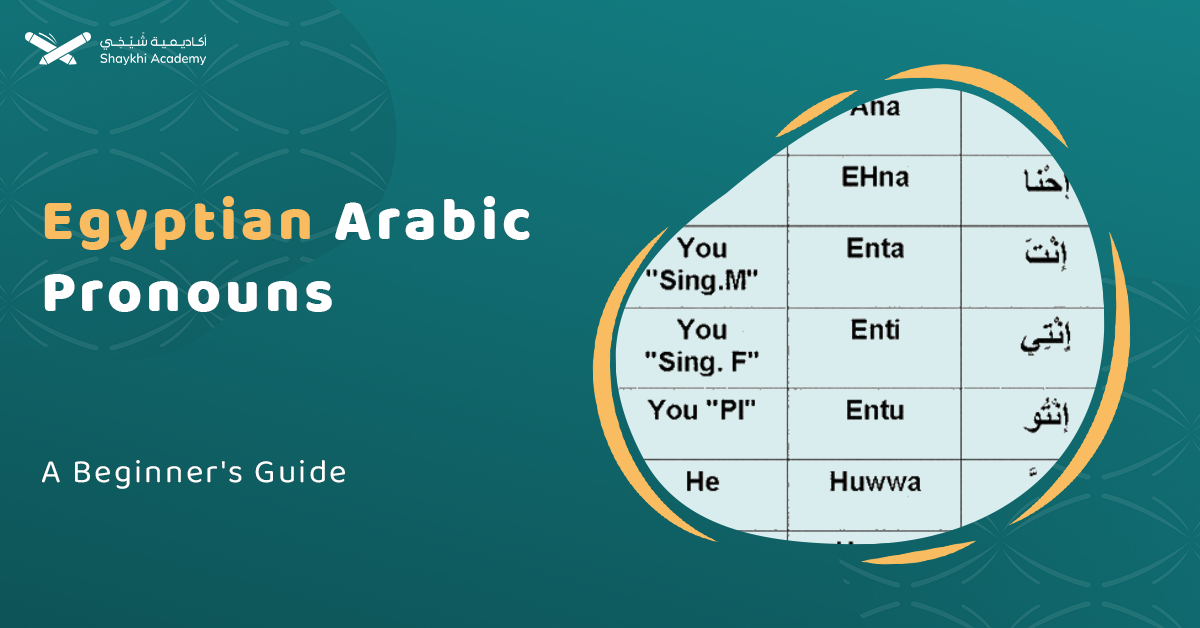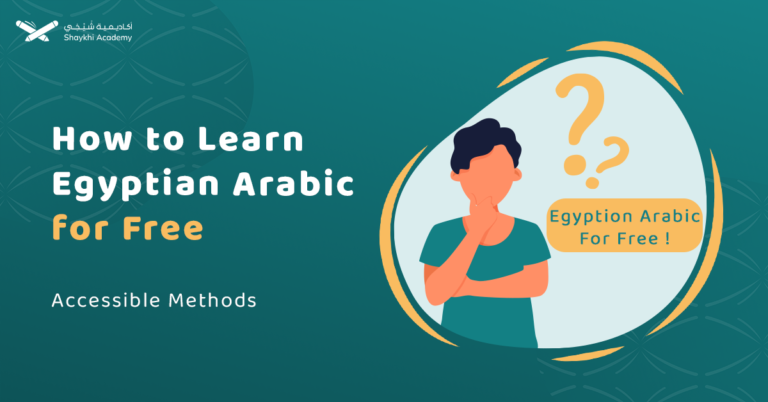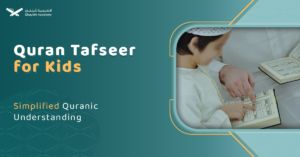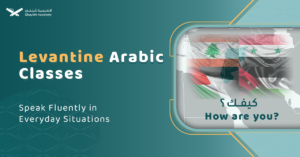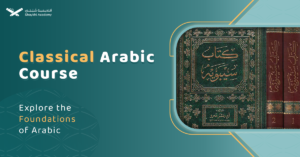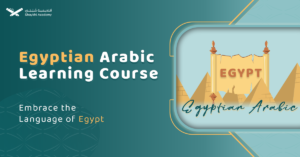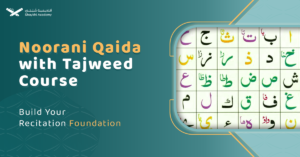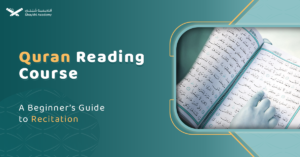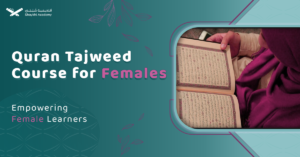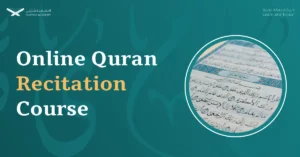Egyptian Arabic pronouns simplify communication by replacing nouns in sentences, offering clarity and fluency. They include personal (e.g., أنا – “I,” هو – “he”), demonstrative (e.g., ده – “this”), indefinite (e.g., حد – “someone”), and relative pronouns (e.g., اللي – “who/that”). For instance, “هي” in هي تقرأ القرآن means “she.”
Pronouns are short words used in Arabic and English that can function as a noun phrase used by itself or to someone or something mentioned elsewhere in the discussion. Both the speaker and listener know what pronouns represent.
Using pronouns in Arabic is important; you need to function them accurately to be fluent. Some Pronouns in the Egyptian Arabic language have different pronunciations.
In this article, you will learn more about Egyptian Arabic pronouns, their structure, their differences, and how to use them in representable exercises.
What Are Pronouns in Egyptian Arabic?
Pronouns are words that replace a name or noun mentioned in the same sentence or previous one. For example:
| Eman is learning the Arabic language. She studies it for an hour every day. |
| إيمان بتتعلم اللغة العربية. هي بتذاكرها كل يوم لمدة ساعة. |
“She – هي” represents “Eman” in the second sentence and “It – هـ in word بتذاكرها” represents the “Arabic Language”.
Pronouns are formed of 4 main groups:
1- Personal Pronouns
Personal Pronouns are I, Me, Mine, He, Him, His, … etc.
2- Demonstrative Pronouns
Demonstrative Pronouns are This, That, and Those.
3- Indefinite Pronouns
Indefinite Pronouns are Somebody and Anywhere.
4- Relative Pronouns
Relative Pronouns are Who, Which, and That.
Personal Pronouns in Egyptian Arabic
There are 4 versions of personal pronouns in English, but there are more in Egyptian Arabic. If we talk about “I – أنا” the first singular for example:
| English | Standard Arabic | Egyptian Arabic | Form | Example |
| I | أنا (Ana) | أنا (Ana) | Subject | أنا مبسوط I’m happy |
| Me | ـي (Ey) | ـي (Ey) | Object | ساعتي My watch الساعة تخصني The watch belongs to me |
| To Me | ـي (Ey) | ـي (Ey) | Indirect Object | |
| Mine | ملكي (Melky) | بتاعي (Beta’y) | Possessive | الكراسة بتاعتي My notebook |
| Myself | نفسي (Nafsy) | نفسي (Nafsy) | Reflective | بهتم بنفسي I take care of myself |
Another example is the second singular or plural “You”:
| English | Standard Arabic | Egyptian Arabic | Form | Example |
| You | أنت/ أنتم (Anta/ Antom) | أنت/ أنتم (Anta/ Antom) | Subject | إنت صاحبي You’re my friend |
| Your | ـك/ ـكم (Ho/ Hom) | ـك/ ـكم (Ho/ Hom) | Object | دا صاحبك This is your friend |
| For you | لك/ لهم (Lak/ Lahom) | لك/ لهم (Lek/ Lohom) | Indirect Object | دا صاحب ليك This is a friend for you |
| Yours | ملكك/ ملكهم (Melkak/ Melkahom) | بتاعك/ بتاعهم (Beta’k/ Beta’hom) | Possessive | المحفظة بتاعتك The bocket is yours |
| Yourself/ Yourselves | نفسك/ نفوسكم (Nafsak/ Nfoshom) | نفسك/ نفوسكم (Nafsak/ Nfoshom) | Reflective | اهتم بنفسك Take care of yourself |
The third singular is “He/ She/ They”. “They” could also used as the third plural:
| English | Standard Arabic | Egyptian Arabic | Form | Example |
| He/ She/ They | هو(Howa)/ هي(Heya)/ هم (Hom) | هو(Howa)/ هي(Heya)/ هما (Homa) | Subject | هو طيب He is Kind هي جميلة She’s beautiful هما أصحاب They are friends |
| His/ Her/ Their | ـه (Ho)/ ـها (Ha)/ ـهم (Hom) | ـه (Oh)/ ـها (Ha)/ ـهم (Hom) | Object | شنطته His bag كتابها Her book أقلامهم Their pens |
| For him/ For her/ For them | له (Laho)/ لها (Laha)/ لهم (Lahom) | له (Loh)/ لها (Leha)/ لهم (Lohom) | Indirect Object | الساعة له The watch is for him الوردة دي لها This flower is for her الحب كله لهم The whole love for them |
| His/ Hers/ Theirs | ملكه (Melkaho)/ ملكها (Melkaha)/ ملكهم (Melkahom) | له (Loh)/ لها (Leha)/ لهم (Lohom) | Possessive | |
| Himself/ Herself/ Themselves | نفسه (Nafsaho)/ نفسها (Nafsaha)/ أنفسهم (Anfosahom) | نفسه (Nafso)/ نفسها (Nafsaha)/ نفسهم (Nafsohom) | Reflective | لازم ياخد باله من نفسه He should take care of himself |
The first plural is “We”:
| English | Standard Arabic | Egyptian Arabic | Form |
| We | نحن (Nahno) | إحنا (Ehna) | Subject |
| Our | ـنا (Na) | ـنا (Na) | Object |
| For us | لنا (Lana) | لينا (Lena) | Indirect Object |
| Ours | ملكنا (Melkana) | ملكنا (Melkena) | Possessive |
| Ourselves | أنفسنا (Anfosana) | نفسنا (Nafsena) | Reflective |
In Egyptian Arabic, there is no neutral pronoun (It). (He) or (She) forms are used depending on the gender.
Egyptian Arabic Demonstrative Pronouns
Demonstrative pronouns are those used when you want to point to something. In Egyptian Arabic, they are completely different from standard Arabic.
| English | Standard Arabic | Egyptian Arabic |
| This (man) | ذلك (Thaleka) | ده (Dah) |
| This (woman) | تلك (Telka) | دي (Dee) |
| Those (man) | أولئك (Ola’ek) | دول (Dol) |
| Those (woman) | تلكم (Telkomo) | ديه (Deya) |
If you want to use them attached to a noun rather than a replacement, it will represent a demonstrative adjective in Egyptian Arabic. To understand the difference see the following examples:
| English | Standard Arabic | Egyptian Arabic |
| How much is the rosary? | ما سعر المسحبة؟ | بكام المسبحة؟ |
| How much is this? | ما سعر تلك؟ | بكام دي؟ |
| How much is this rosary? | ما سعر تلك المسبحة؟ | بكام المسبحة دي؟ |
Egyptian Arabic Indefinite Pronouns
In Egyptian Arabic, there are indefinite pronouns that are used the same as English pronouns. They don’t refer to anyone or anything in particular.
| English | Standard Arabic | Egyptian Arabic |
| Somebody | أحد ما | حد (Had) |
| Anybody | أي أحد | أي حد (Ay had) |
| Nobody | لا أحد | ولا حد (Wala had) |
| Something | شيئًا ما | حاجه (Haga) |
| Anything | أي شيء | أي حاجه (Ay haga) |
| Nothing | ولا شيء | ولا حاجه (Wala haga) |
| Somewhere | مكان ما | مكان (Makan) |
| Anywhere | أي مكان | أي مكان (Ay makan) |
| Nowhere | لا مكان | ولا مكان (Wala makan) |
Sentence examples:
| Anyone can join the lesson next time. |
| أي حد ممكن يحضر الدرس المرة الجايه. |
Egyptian Arabic Relative Pronouns
A relative pronoun is a word that introduces a dependent (or relative) clause and connects it to an independent clause. To understand well read the following example and concentrate.
| I know the man who sells Hijabs. |
| عارف الراجل اللي بيبيع حجاب. |
The who-clause describes the man in the first sentence.
There are three different relative pronouns in English (Who, Which, and That) they are all presented in Egyptian Arabic as “اللي”. Examples:
| English | Standard Arabic | Egyptian Arabic |
| I know the Academy that can help you to learn Egyptian Arabic. | أعرف الأكاديمية التي يمكنها مساعدتك لتعلم العربية المصرية. | عارف الأكاديمية اللي ممكن تساعدك تتعلم عربي مصري. |
| I know the Shaykh who can teach you the Quran. | أعرف الشيخ الذي يمكنه تدريسك القرآن. | عارف الشيخ اللي ممكن يدرسك قرآن. |
| I know a Masjed at which you can attend islamic lessons. | أعرف المسجد الذي يمكنك الذهاب إليه لحضور دروس إسلامية. | عارف المسجد اللي ممكن تروحه وتحضر دروس إسلامية. |
Suffixe Pronounces
Pronouns could be attached to a verb as a suffix, conjunction, or preposition. In this case, it acts as a normal pronoun. To have a clear understanding please read the following example with caution:
| Element | English | Standard Arabic | Egyptian Arabic |
| Verb object | The Quran, I love reading it every day. | القرآن الكريم، أحب قراءته كل يوم. | القرآن الكريم بحب أقرأه كل يوم |
| Conjunction Subject | If you don’t want to miss Salah, You should go to the mosque now. | إذا لم ترد أن تفوتك الصلاة، عليك أن تذهب إلى المسجد الآن. | لو مش عايز تفوت الصلاة، لازم إنك تروح للمسجد دلوقتي. |
| Preposition Subject | Do you have a toothpick? | هل لديك مسواك؟ | معاك مسواك؟ |
Read more about: How to Learn Egyptian Arabic for Free?
Egyptian Arabic Attached Pronouns
Attached pronouns are those attached to a word before and can’t be pronounced alone. It could be separated according to syntactic position into three categories:
A- Pronouns that are marked with the nominative case:
| English Name | Arabic Name | Examples |
| The subject’s Taa | تاء الفاعل (Ta’a Al-fael) | جلستَ You Sat جلستِ You Sat (for female) جلستما You Both Sat جلستم You Sat (Plural) جلستن You Sat (Plural for females) |
| The Dual Alif | ألف المثنى (Alif Almothana) | لعبا They Played لعبتا They Played (For females) يلعبان They are playing تلعبان They are playing (For females) العبا You both play |
| The Plural Wow | واو الجماعة (Waw Algamaa) | كتبوا They wrote يكتبون They are writing اكتبوا Write |
| Women’s nun | نون النسوة (Noon Alneswa) | سمعن They listened يسمعن They are listening اسمعن Listen |
| Ya of Singular Pronoun | ياء المخاطبة (Ya Almokhataba) | اجري Run تجرين You are running |
B- Common pronouns between the accusative and genitive:
| English Name | Arabic Name | Examples |
| Speaker’s Ya | ياء المتكلم | رب ارحمني Allah have mercy on me |
| رب اغفر لي Allah forgive me | ||
| Kaf al-Khattab | كاف الخطاب | أعلمتك I told you |
| اجتهد في مدارستك Work hard on your study | ||
| Ha’a Al-Ghaeb | هاء الغائب | أعلمته I told him |
| يجتهد في دراسته He is doing hard on his study |
C- A common pronoun between the nominative, accusative, and genitive:
It’s only one pronoun “نا” like:
| قوله تعالى: “ربنا لا تؤاخذنا إن نسينا” – سورة البقرة آية 286 |
| “Our Lord, do not condemn us if we forget” – surah Baqarah aya 286 |
In “ربنا” the pronoun “نا” is attached in the place of a prepositional phrase.
In “تؤاخذنا” the pronoun “نا” is attached in the accusative case as a direct object.
In “نسينا” the pronoun “نا” is attached in the nominative case as a subject.
You can learn Quranic Arabic at Shaykhi Academy to be more fluent and know more about pronoun usage.
Detached Pronouns in Egyptian Arabic
Detached pronouns are pronouns that could be pronounced without attaching to other words. It’s separated into two categories:
A- Separated Subject Pronouns
| Type | English | Egyptian Arabic |
| First person pronouns | I/ We | أنا (Ana)/ إحنا (Ehna) |
| Second person pronouns | You | إنت (Enta)/ إنتي (Enty -for female-)/ إنتوا (Ento) |
| Third person pronouns | He/ She/ They | هو(Howa)/ هي (Heya)/ هما (Homa) |
B- Separate Accusative Pronouns
| English | Standard Arabic | Egyptian Arabic |
| Mine | إياي (Eyay) | بتاعي (Betaay) |
| Ours | إيانا (Eyana) | بتاعنا (Betaana) |
| Yours | إياكَ (Eyaka) | بتاعك (Betaak) |
| إياكِ (Eyake) | بتاعِك (Betaek) | |
| إياكما (Eyakoma) | بتاعكوا (Betaako) | |
| إياكم (Eyakom) | ||
| إياكن (Eyakona) | ||
| His | إياه (Eyaho) | بتاعه (Betaaoh) |
| Her | إياها (Eyaha) | بتاعها (Betaaha) |
| Their | إياهما (Eyahoma) | بتاعهم (Betaahom) |
| إياهم (Eyahom) | ||
| إياهن (Eyahona) |
She/Her Pronouns in Egyptian Arabic with Examples
In Egyptian Arabic, She/ Her is represented as “هي Heya” for the subject and contextually inferred for the object. The following are examples to clear:
A- Subject Pronoun “She”
“She” is presented in Egyptian Arabic as “هي” when it goes as a subject pronoun.
| She is reading Quran |
| هي تقرأ القرآن |
B- Object Pronoun “Her”
In Egyptian Arabic there is no equivalent to “Her” but it can be implied in the verb conjugation or through the possessive suffix.
| Her Hijab is here. |
| حجابها هنا. |
The suffix “ـهـ” in “حجابها” represents “Her” in the sentence.
Gender Pronouns in Egyptian Arabic
Egyptian Arabic nouns are straightforward either masculine or feminine and the pronouns too. The English language isn’t affected by gender like in modern standard Arabic the dual personal pronouns don’t have genders. You can learn more about Modern Standard Arabic at Shaykhi Academy.
Examples of pronouns:
| State | English | Egyptian Arabic | Example |
| Singular Pronoun | He | هو | هو تعبان He’s tired |
| She | هي | هي سعيدة She’s happy | |
| Plural Pronoun | They | هما | هما بيلعبوا They’re playing |
| First Person | I | أنا | أنا بذاكر I’m studying |
| We | إحنا | إحنا نشيطين We’re active | |
| Second Person | You | إنت | إنت شاطر You’re cleaver |
| إنتي | إنتي جميلة You’re beautiful | ||
| إنتوا | إنتوا الطلاب الجداد You’re the new students |
Egyptian Arabic Interrogatives
Interrogatives are constructions that have the force of a question. In Egyptian, they differ a lot from standard Arabic.
| English | Standard Arabic | Egyptian Arabic | Example |
| Who? | من؟ (Ma’n) | مين؟ (Meen) | مين برا؟ Who is out their? |
| What? | ماذا؟ (Maza) | ايه؟ (Eh) | ايه في الشنطة؟ What’s in the bag? |
| Where? | أين؟ (Ayn) | فين؟ (Feen) | فين المسجد؟ Where’s the Masjed? |
| When? | متى؟ (Mata) | إمتى؟ (Emta) | امتى ميعاد الدرس؟ When’s the lesson? |
| Why? | لماذا؟ (Lemaza) | ليه؟ (Leeh) | ليه اتأخرت؟ Why you’re late? |
| How? | كيف؟ (Kayf) | إزاي؟ (Ezay) | إزاي نسيت الكتاب؟ How do you forget the book? |
| How Much? | بكم؟ (Bekm) | بكام؟ (Bekam) | بكام القصة؟ How much is the story? |
Egyptian Arabic Subject and Object Pronouns
Subject pronouns are used to understand who a person is talking about while objective pronouns are used when the action of a sentence affects someone or something directly.
A- Subject Pronouns
| Case | English | Standard Arabic | Egyptian Arabic |
| Singular | I | أنا | أنا |
| You (male) | أنتَ | إنت | |
| You (female) | أنتِ | إنتي | |
| He | هو | هو | |
| She | هي | هي | |
| Dual | We | نحن | إحنا |
| You | أنتما | إنتوا | |
| They | هما | هما | |
| Plural | We | نحن | إحنا |
| You (male) | أنتم | إنتوا | |
| You (female) | أنتن | ||
| They (male) | هم | هم | |
| They (female) | هن |
Sentence examples:
| I can speak Egyptian Arabic. | أنا أقدر أتكلم عربي مصري. |
| You are a good Muslim. | أنت مسلم جيد. |
B- Object Pronouns
| English | Standard Arabic | Egyptian Arabic | |
| Singular | Me | ـني | ـني |
| You (male) | ـكَ | ـك | |
| You (female) | ـكِ | ـك | |
| Him | ـه | ـه | |
| Her | ـها | ـها | |
| Dual | Us | ـنا | ـنا |
| You | ـكما | ـكما | |
| Them | ـهما | ـهما | |
| Plural | Us | ـنا | ـنا |
| You (male) | ـكم | ـكو/ ـكم | |
| You (female) | ـكن | ||
| Them (male) | ـهم | ـهم | |
| Them (female) | ـهن |
Sentence examples:
| Listen to me. | اسمعني. |
Possessive pronouns in Egyptian Arabic
Possessive pronouns are pronouns including possession or ownership.
| English | Standard Arabic | Egyptian Arabic | |
| Singular | My | ـي | ـي |
| Your (male) | ـكَ | ـك | |
| Your (female) | ـكِ | ـك | |
| His | ـه | ـه | |
| Her | ـها | ـها | |
| Dual | Our | ـنا | ـنا |
| Your | ـكما | ـكما | |
| Their | ـهما | ـهما | |
| Plural | Our | ـنا | ـنا |
| Your (male) | ـكم | ـكو/ ـكم | |
| Your (female) | ـكن | ||
| Their (male) | ـهم | ـهم | |
| Their (female) | ـهن |
Sentence examples:
| My lesson is tomorrow | درسي بكره |
| Our Shaykh is cleaver | شيخنا شاطر |
| Your dad is proud of you | أبوكم فخور بيكم |
Learn Arabic Today with Native Teachers at Shayki Academy
You can join the General Arabic Course at Shaykhi Academy which covers essential language components like reading, writing, grammar, and listening, with the help of highly qualified native speakers.
Why to choose Our Academy?
a- Structured Learning Paths
Shayki Academy offers a range of courses covering the base of Arabic languages. Each course ensures a gradual and fruitful learning experience.
b- Expert Instruction
Teachers at Shayki Academy are Native speakers and are skilled in teaching techniques.
c- Flexible Scheduling
Shayki Academy offers flexible study times and online learning options. This allows students to learn at their own pace.
Explore Our Arabic Courses:
- Noorani Qaida: Build a strong foundation in Quranic Arabic.
- Comprehensive Arabic Courses: Master the Arabic language, from beginner to advanced levels.
- Fusha Arabic Classes: Delve into Modern Standard Arabic, the key to understanding literature, media, and formal communication across the Arab world.
- Quranic Arabic Course: Enhance your connection with the Quran by learning the language in which it was revealed.
Start Your Arabic Journey Today! Whether you’re just starting or looking to deepen your knowledge, Shaykhi Academy is here to support your journey. Book your free trial now and begin your path to Arabic mastery!

Conclusion
Egyptian Arabic pronouns are essential for effective communication, serving as substitutes for names or nouns. They are classified into personal, demonstrative, indefinite, and relative pronouns. Personal pronouns like “أنا” (I) or “إنت” (You) vary in form depending on their grammatical role—subject, object, possessive, or reflective.
Demonstrative pronouns such as “ده” (This) and “دول” (Those) differ from standard Arabic, while indefinite pronouns like “حد” (Somebody) and relative pronouns like “اللي” (Who/Which) seamlessly link clauses. Egyptian Arabic lacks a neutral pronoun for “It,” relying instead on gendered pronouns. Attached and detached pronouns add further flexibility, blending into verbs, nouns, or prepositions based on their syntactic function.
Gendered distinctions are central to Egyptian Arabic, reflecting the noun’s masculine or feminine nature. Examples include “هي” (She) and “هو” (He). Interrogative pronouns like “مين” (Who?) and “فين” (Where?) simplify questions, diverging from formal Arabic structures. Pronoun usage is enriched by suffixes and forms denoting ownership, such as “بتاعها” (Hers).
Egyptian Arabic Pronouns differ from Standard Arabic in pronunciation but have the same function, usage, and position in the sentence. Understanding the pronouns will simplify your communication by replacing repeated nouns and will enhance your speaking ability.
Understanding the difference between personal, demonstrative, indefinite, and relative pronouns will help the learner to report the meaning in different contexts.
